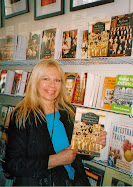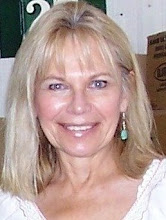Why did my grandparents leave Wilno, and why did they settle in Worcester? Despite all the research I’ve done over the past 12 years, I don’t have satisfying answers to these basic questions. I never will. The only people who could have spoken from the heart about their life experiences, beliefs, aspirations, and motivations were my grandparents themselves, and it is decades too late to ask them.
When I began tracking their emigration from Russian Poland to the United States, locating their names on passenger lists was challenge enough. Not impossible, thanks to Soundex codes and National Archives microfilms. My cousin/genealogy mentor John had already found the manifests for our shared grandparents, Aleksandr and Stefania Prokopowicz. Hours spent at the Worcester Public Library (which had the Boston passenger lists on microfilm) and more hours at an LDS Family History Center in Oxford, Maine, successfully turned up the documents for my paternal grandparents, Julian Prokopowicz and Anna Blaszko.
“Chain migration.” “A better life.” In Polish, emigracja za chlebem—literally, “emigration for bread.” These facile phrases sum up the how and why of the “second great wave” that carried millions of immigrants across the world to American shores between 1870 and 1920. About 2 million Poles, most from the Russian and Austro-Hungarian empires, immigrated to the United States between 1890 and 1920 (or, perhaps more accurately, between 1897 and 1913). The Polish “wave” crested in 1913 with the arrival of nearly 175,000 immigrants, my two grandmothers among them.
Seeking context
I have scanned images of passenger ships and ports to illustrate my grandparents’ immigration experiences. The manifests provide the basic details: ship names, dates and ports of departure and arrival, some personal data recorded in various columns, and even the names of apparent travel companions (my conjecture, based on their having the same birthplaces and/or destinations). But I want to give my grandparents’ experiences the context they deserve and give substance to those two well-worn phrases, “chain migration” and “a better life.”
To that end, I have also located passenger lists for my grandparents’ known relatives, as well as for friends who may have some still-to-be-revealed family connection. I mull my grandparents’ personal motivations for leaving their parents and (some) siblings behind in their quest for whatever “a better life” meant to them. This has me analyzing fragments of family stories and cobbling them together with facts gleaned from my ongoing (and admittedly inadequate) study of their era in Russian Poland and the early-20th-century United States. The fact remains that I will never uncover their inner drives, though I may better understand their circumstances.
Links in the migration chain
The experiences of my maternal grandparents, Aleksandr and Stefania Prokopowicz, are intertwined simply because they had been married for more than a decade before they emigrated. Sometimes in-laws traveled together. Sometimes aunts or uncles shepherded youngsters to parents already in America. Chain migration introduces these families to the story: the Ruscik, Baniukiewicz, and Nowicki surnames are prominent.
My paternal grandparents may be treated separately, since they were both single young adults when they set out for America. Julian Prokopowicz was 19, and Anna Blaszko, 20. One thing they had in common was that they both left their parents and all their siblings behind, and never saw them again. To me, this seems like an unspeakably heart-wrenching reality. To my knowledge, Julian had not even a cousin in the United States. His closest relationships in his newfound home in Massachusetts were with the Linga family, who had been friends and neighbors in Kiwance. Anna was a link in a migration chain initiated by the Kulikowski family of Jatowty, who were her maternal cousins. Some of her paternal Blaszko cousins also immigrated, but settled in Pennsylvania, and I have no evidence that they maintained any close connection in this country.
A migration chain is somewhat like a set of Russian nesting dolls—each character reveals the next. With nesting dolls, however, the number is finite. With chain migration, each character reveals another, who reveals another, who reveals another, who reveals another. Someday when I run out of ancestors to research, I would like to determine exactly who the first person was to leave Szczuczyn for America. But even if I accomplish that, I will still never really know why.
Subscribe to:
Post Comments (Atom)










Its really nice to read your thoughts on this. My great-grandmother, grandmother and grandfather all left Vilna, Poland in the 1900s to come to Boston. My father never talked much about this, and I've always wondered the same things.
ReplyDelete